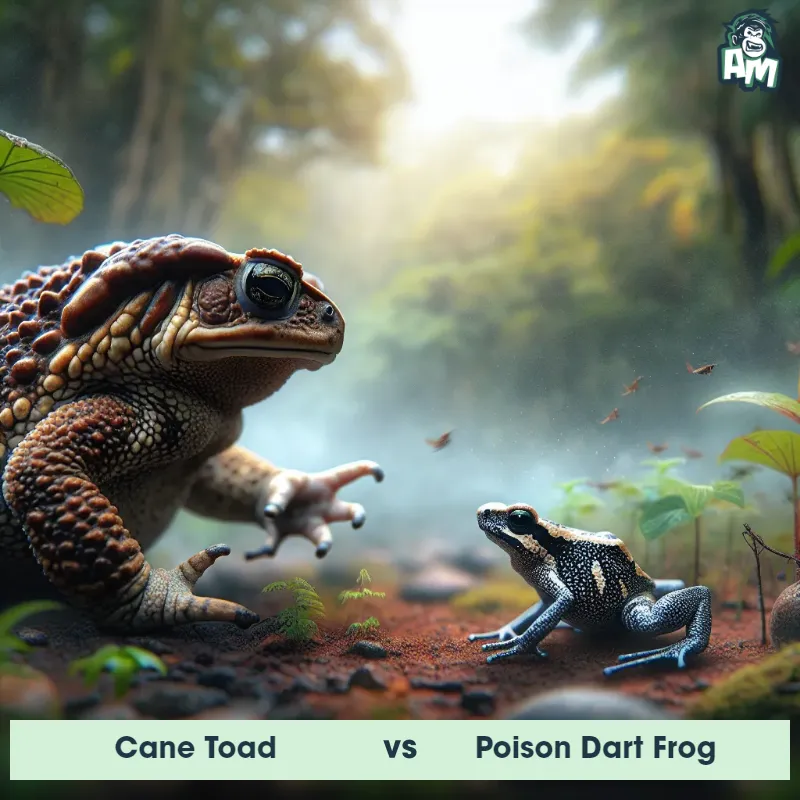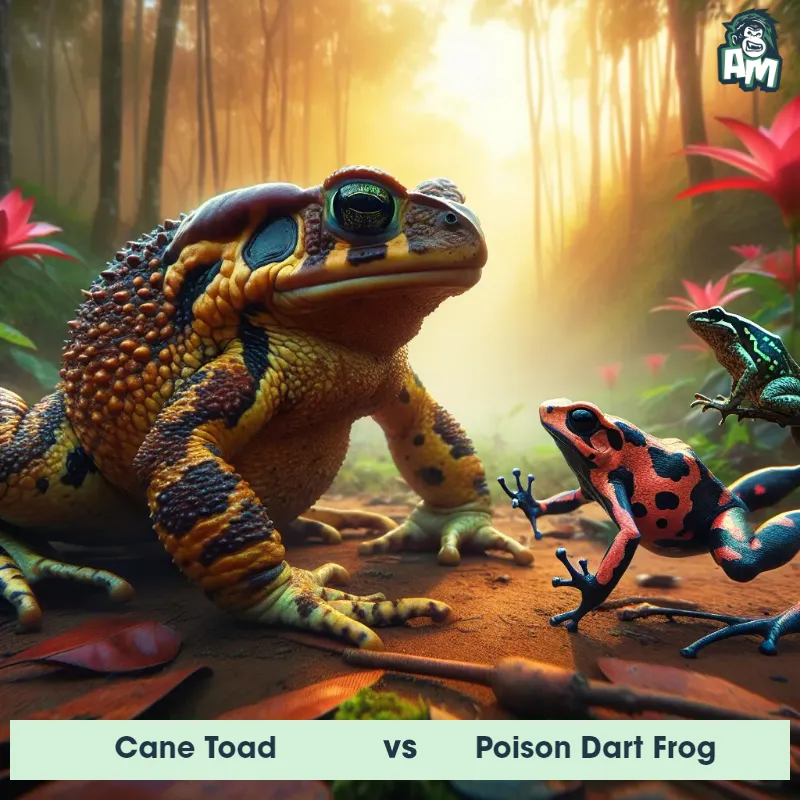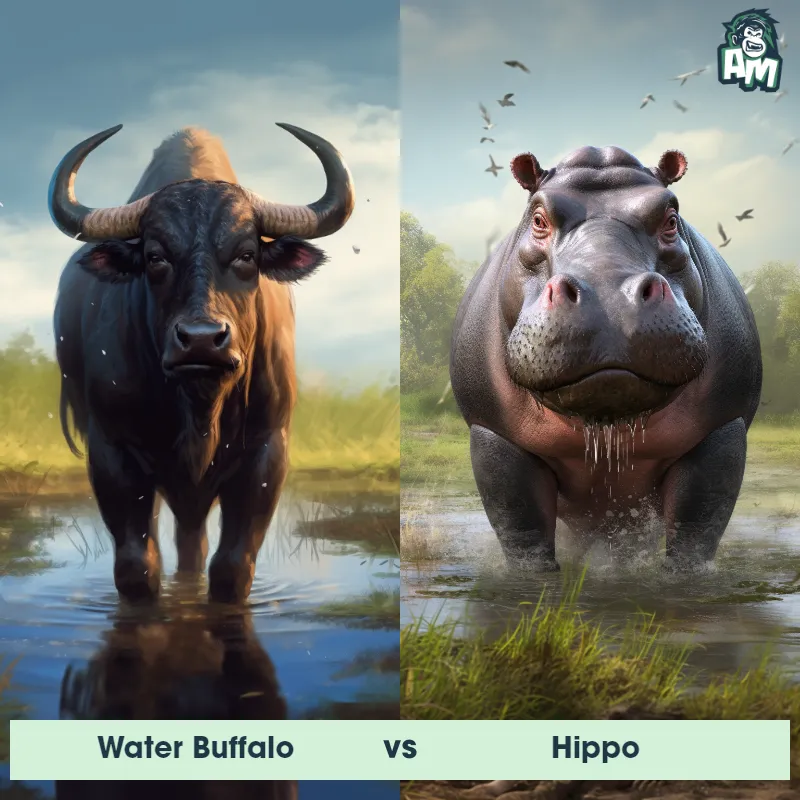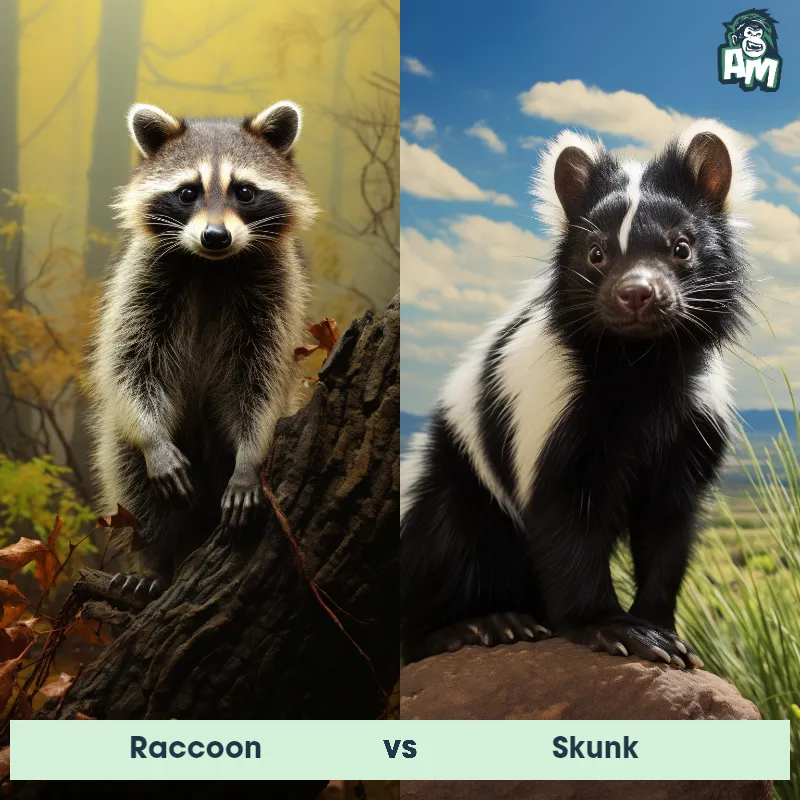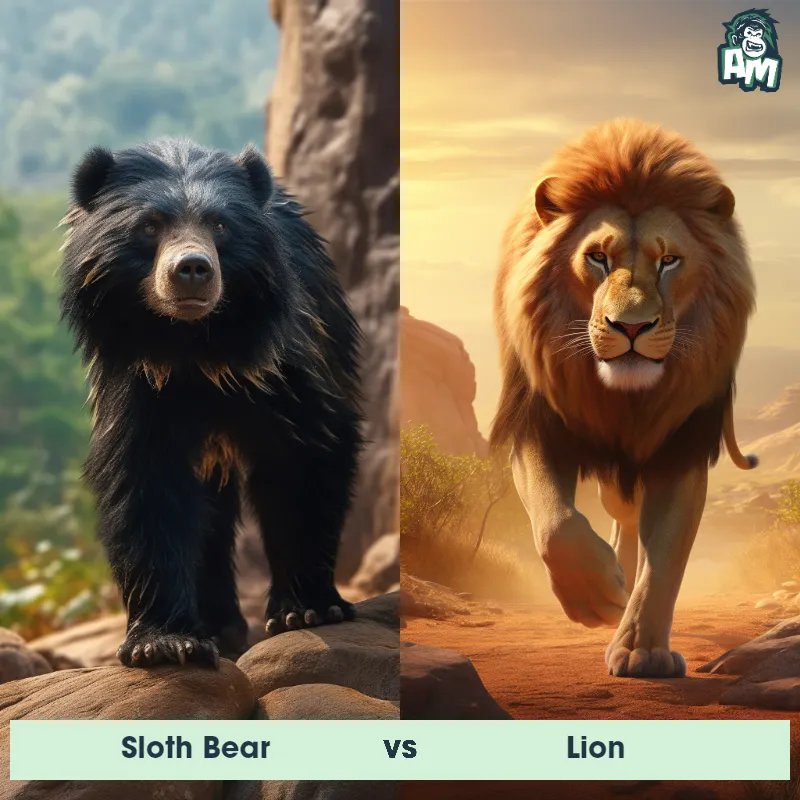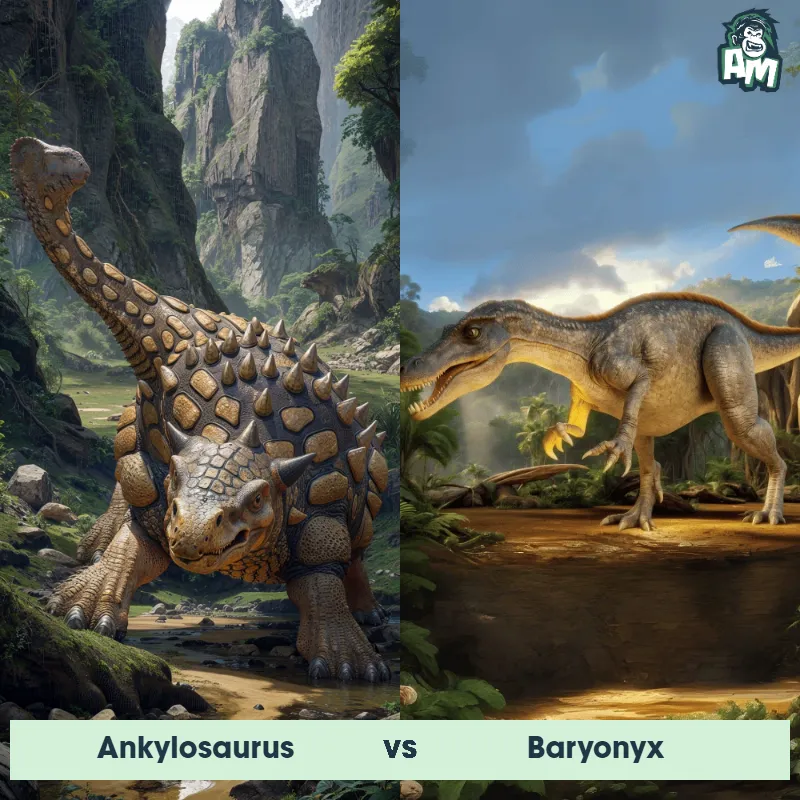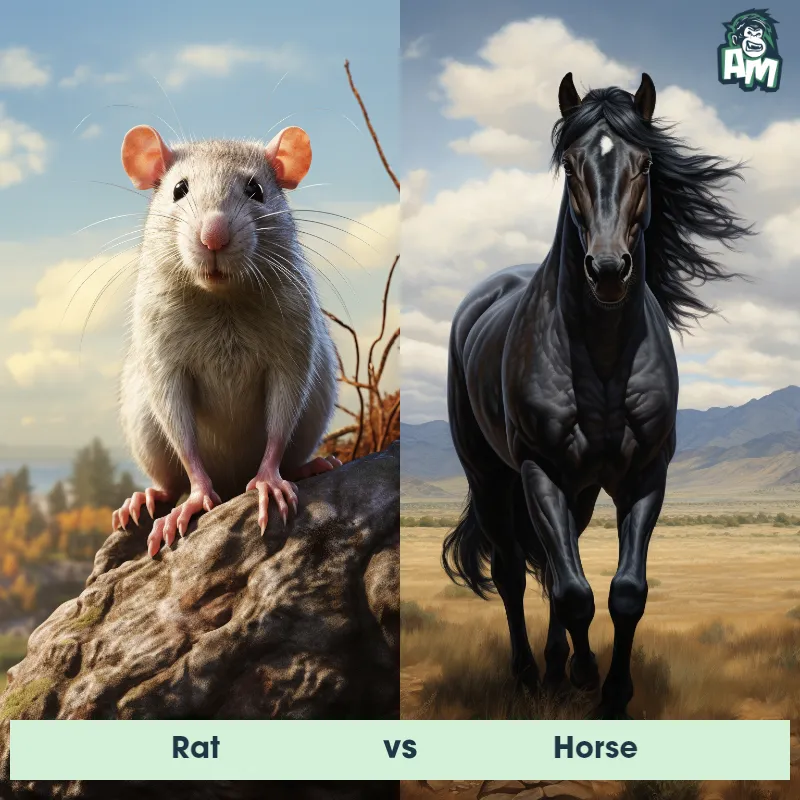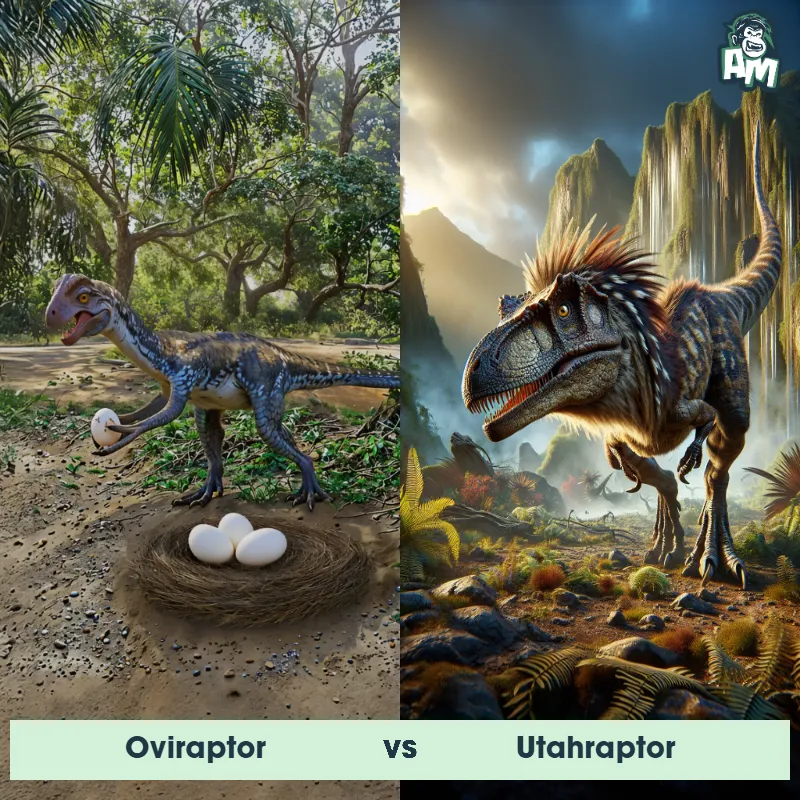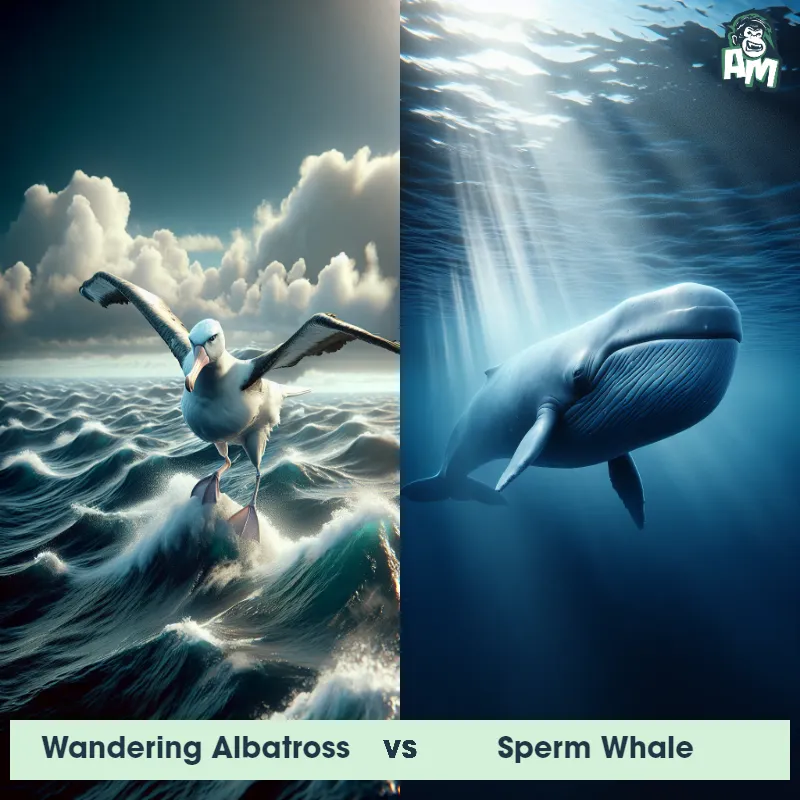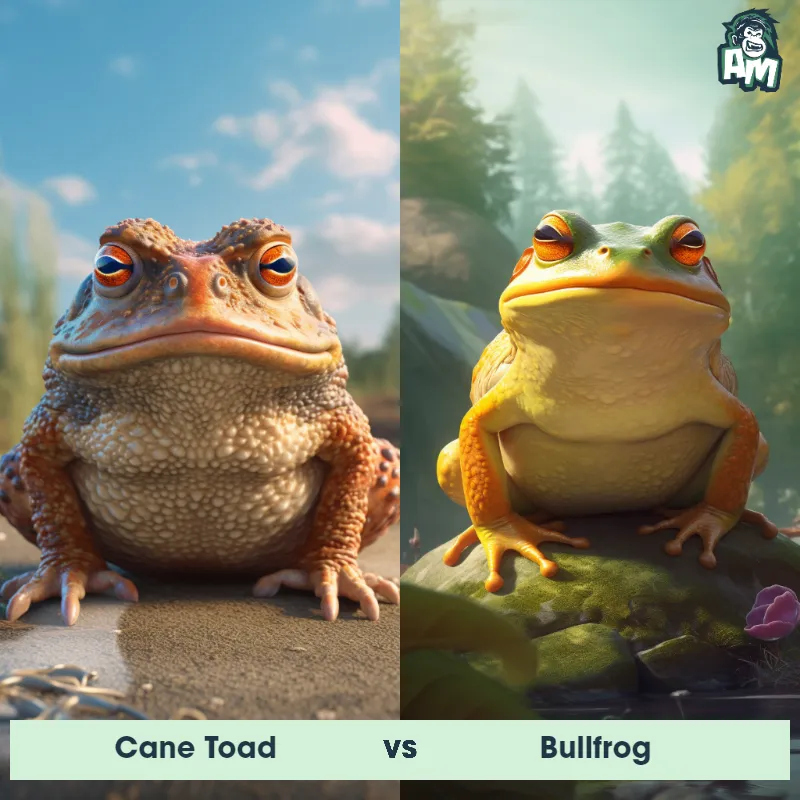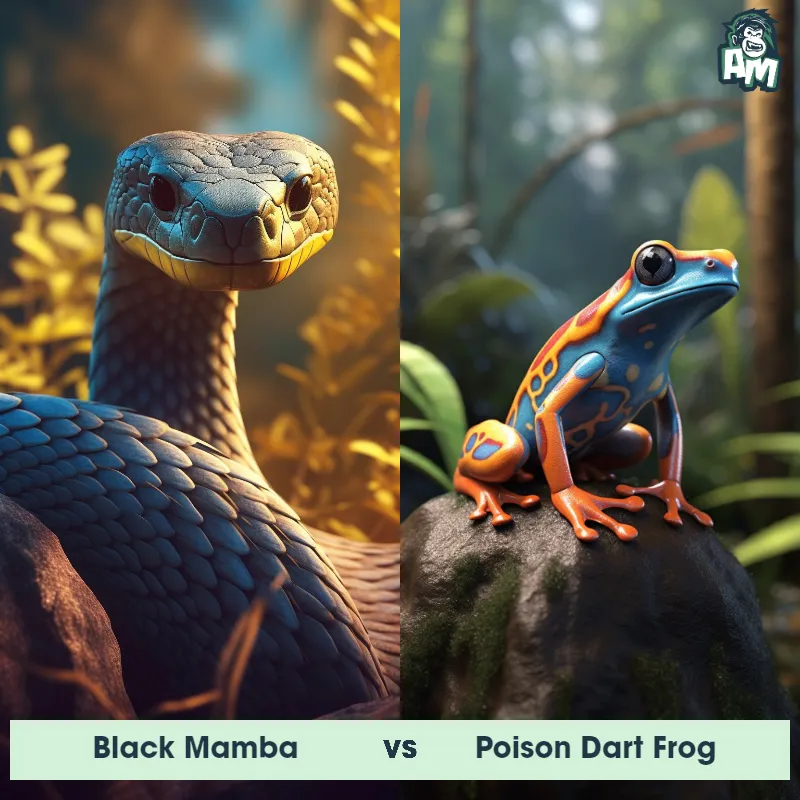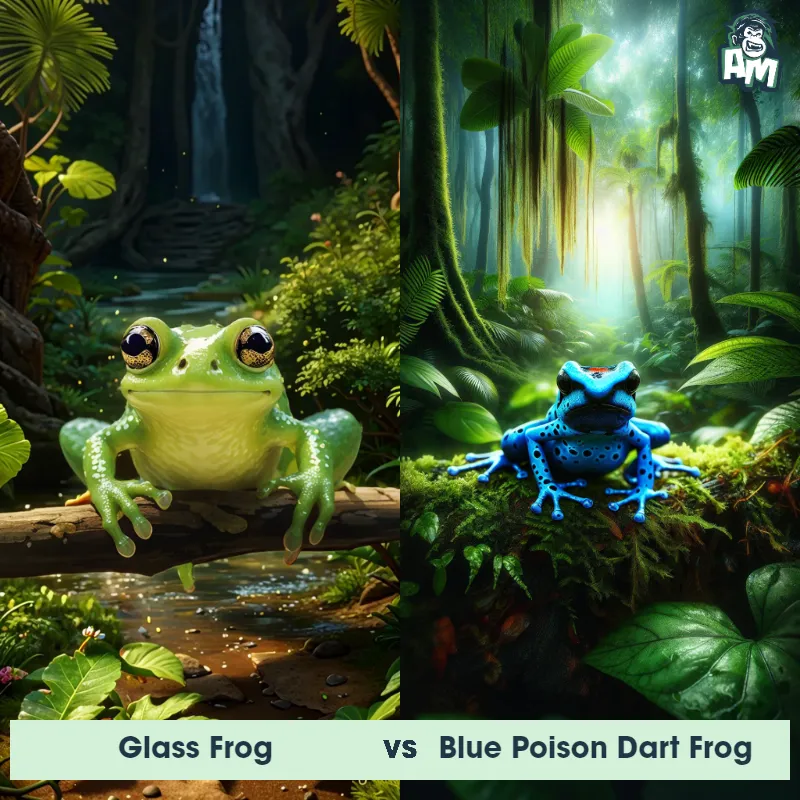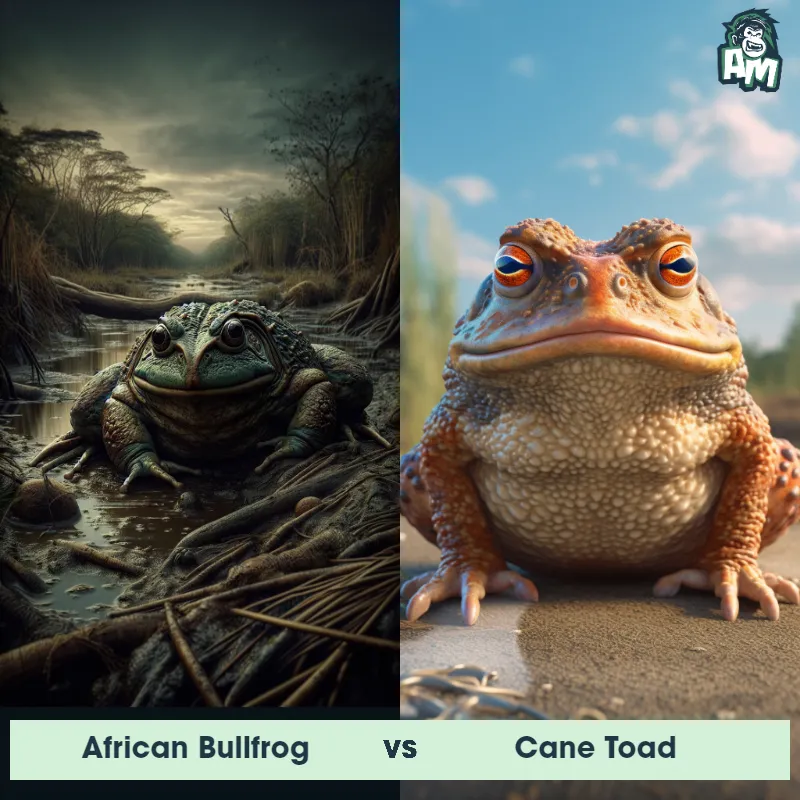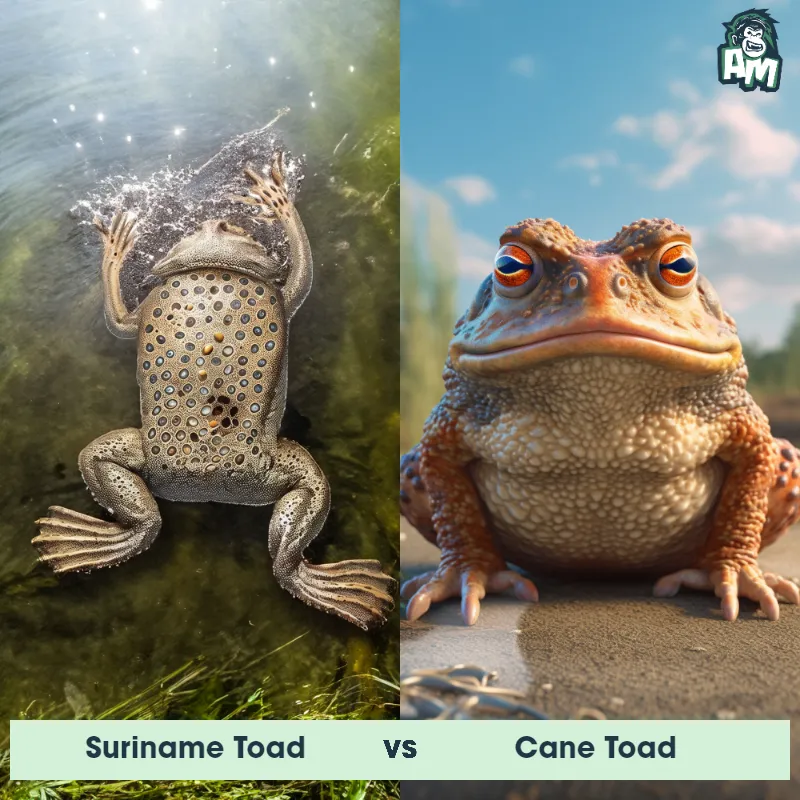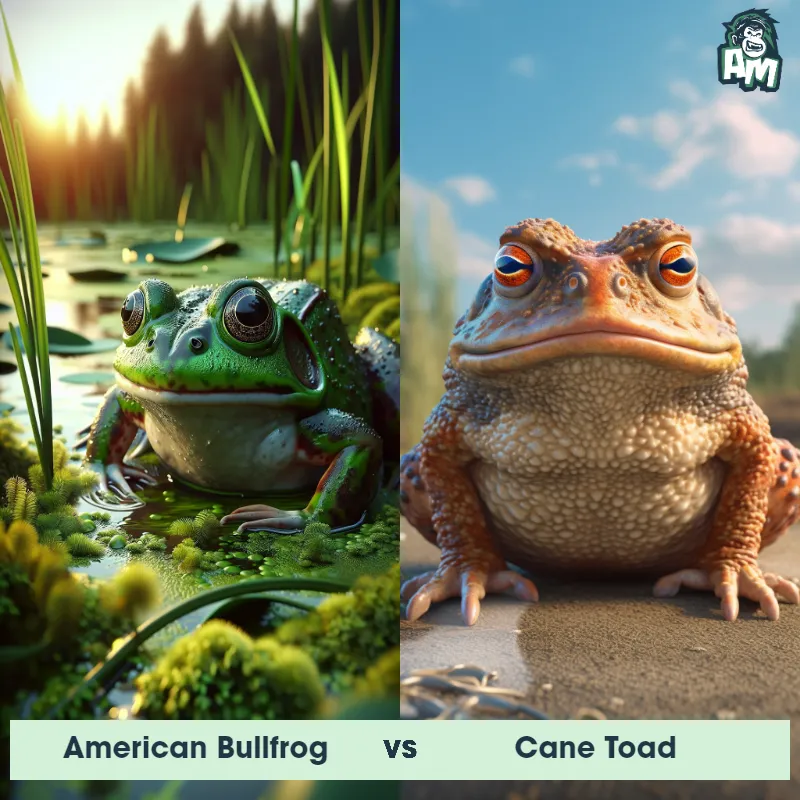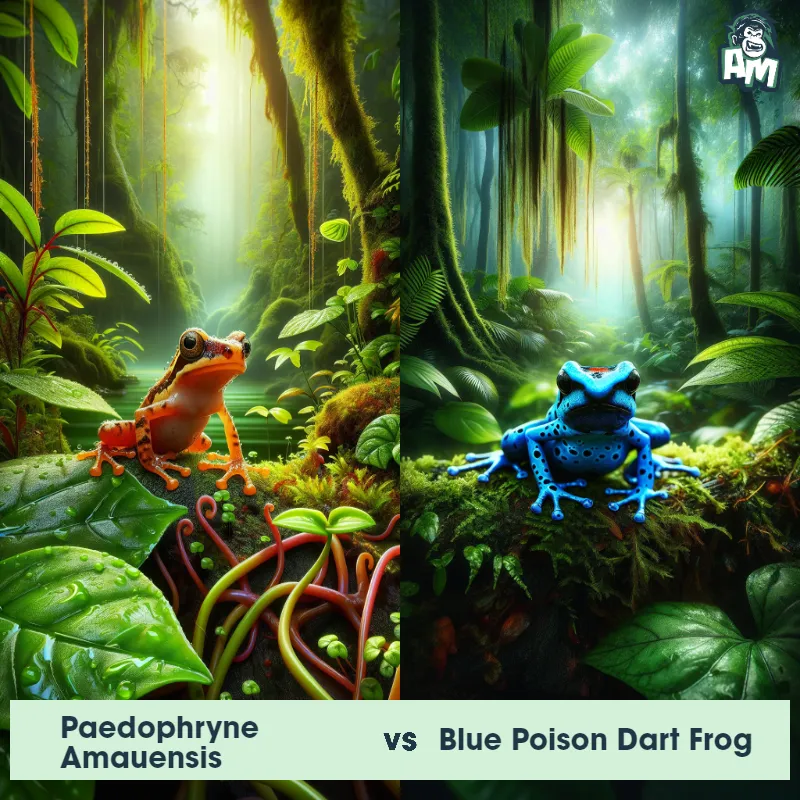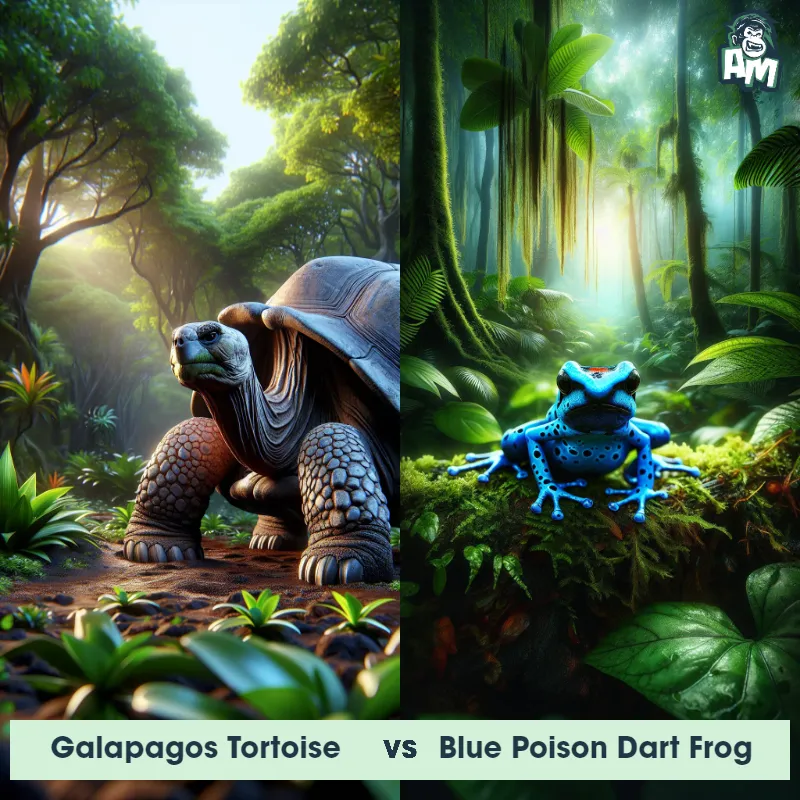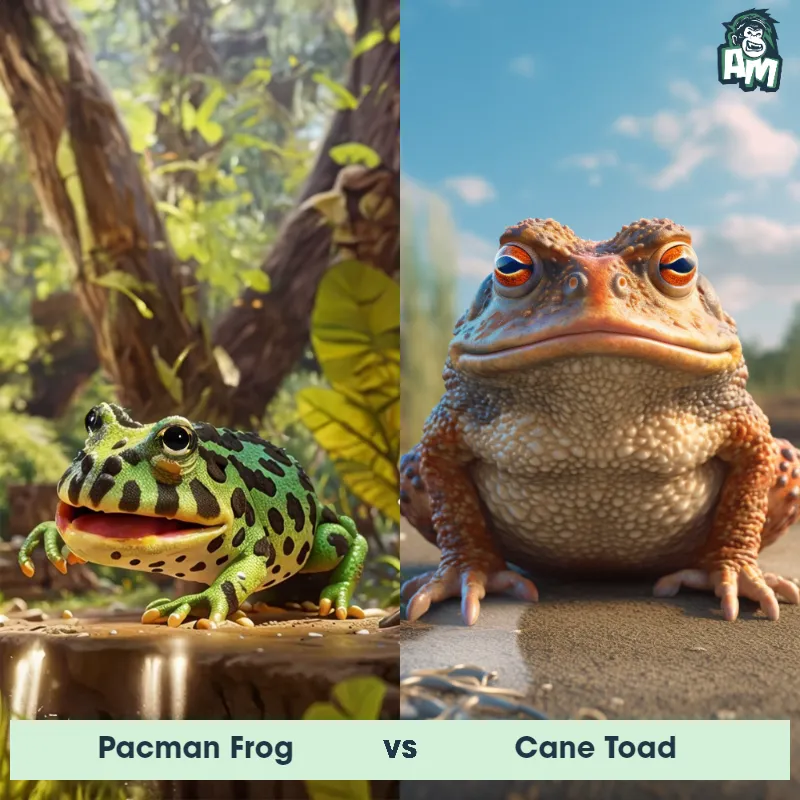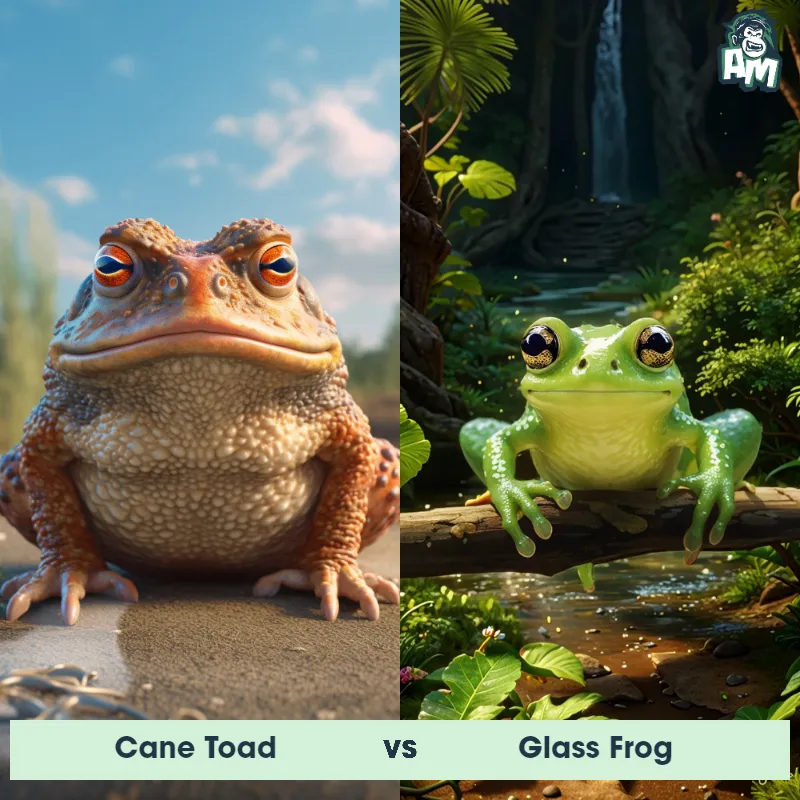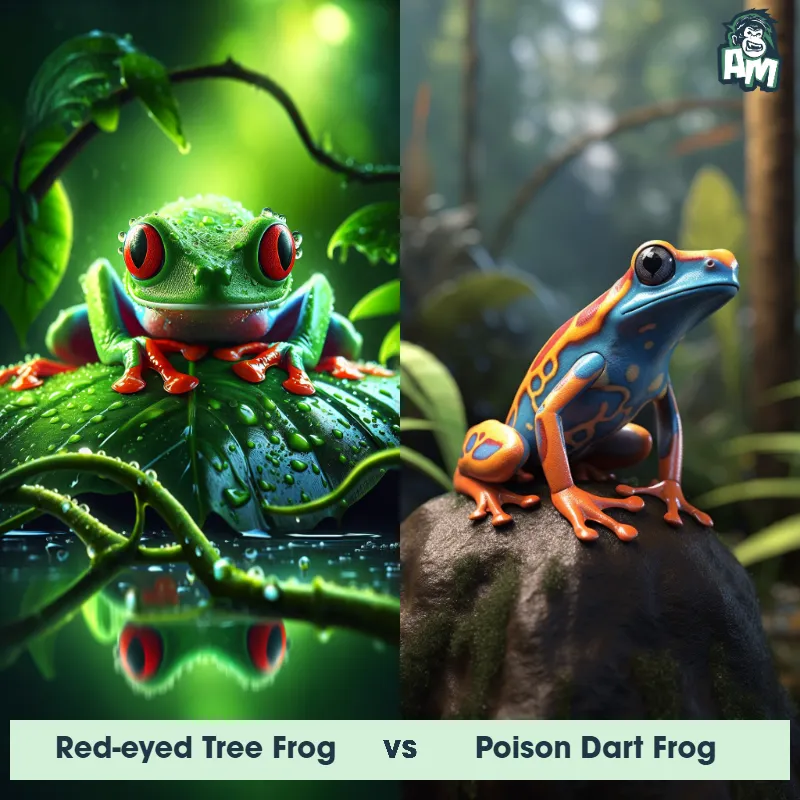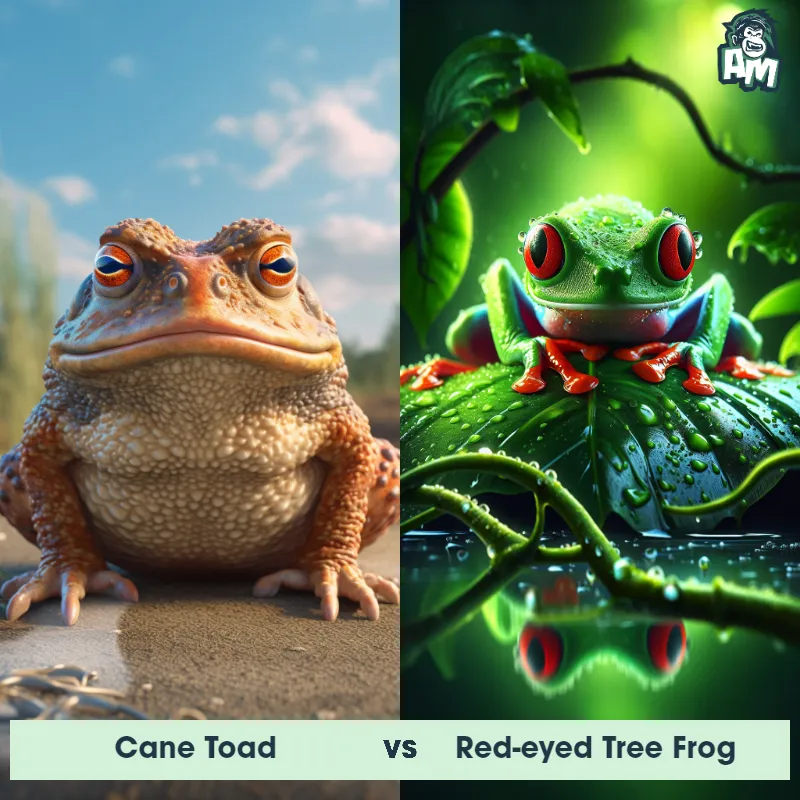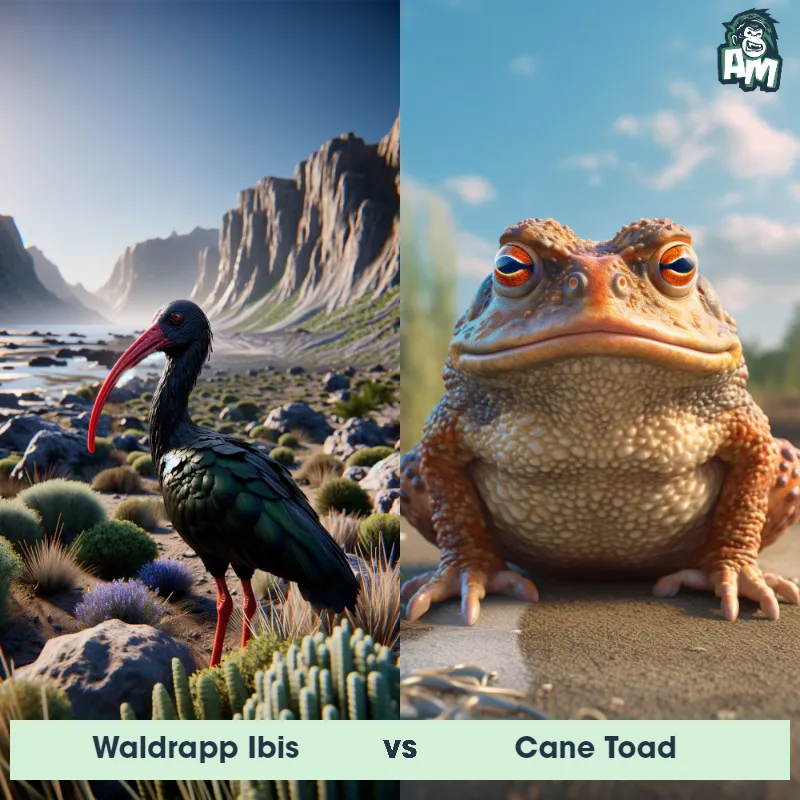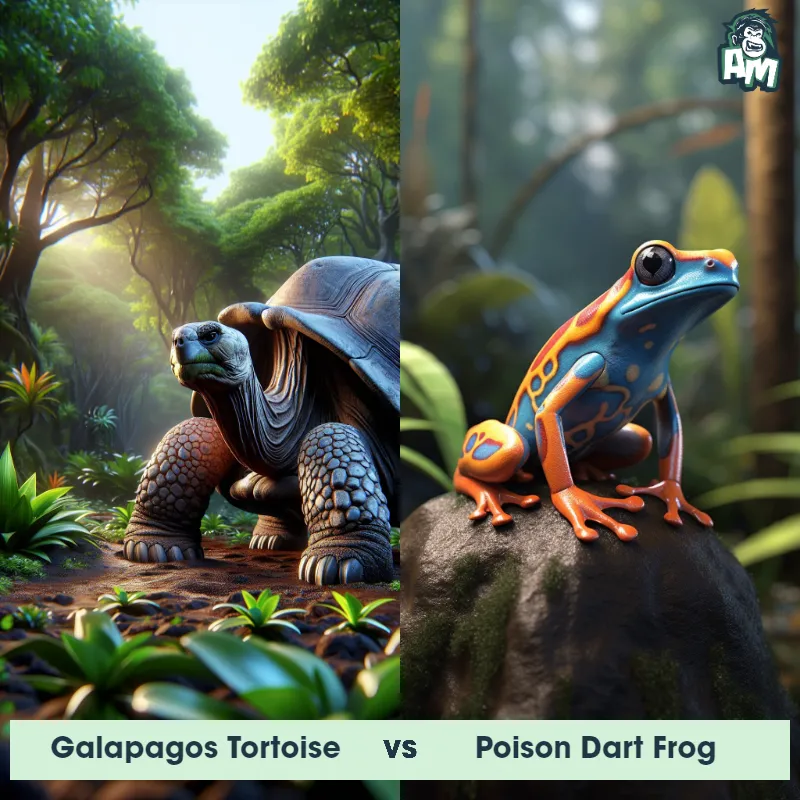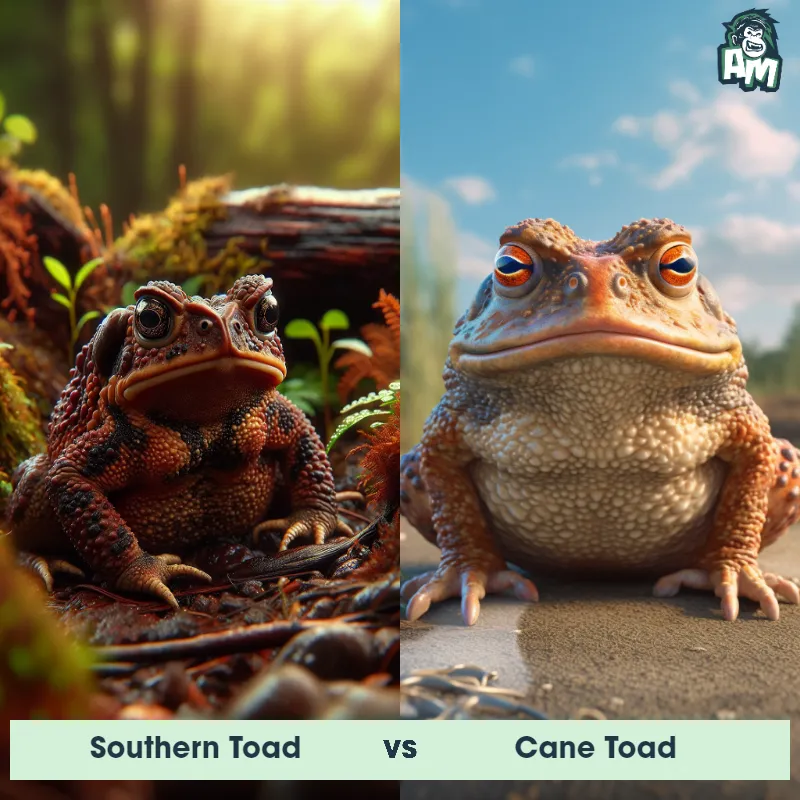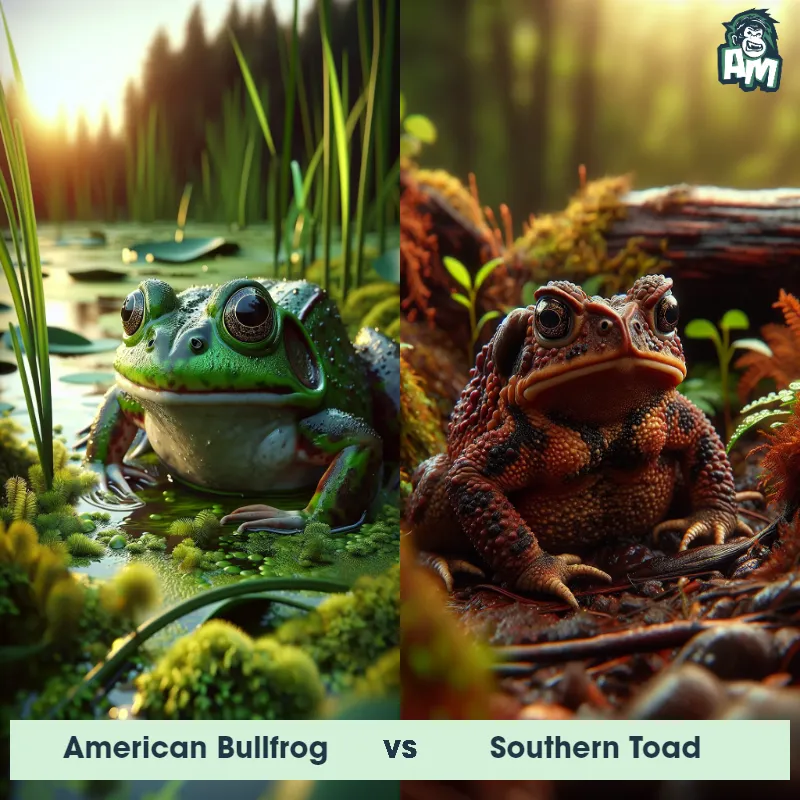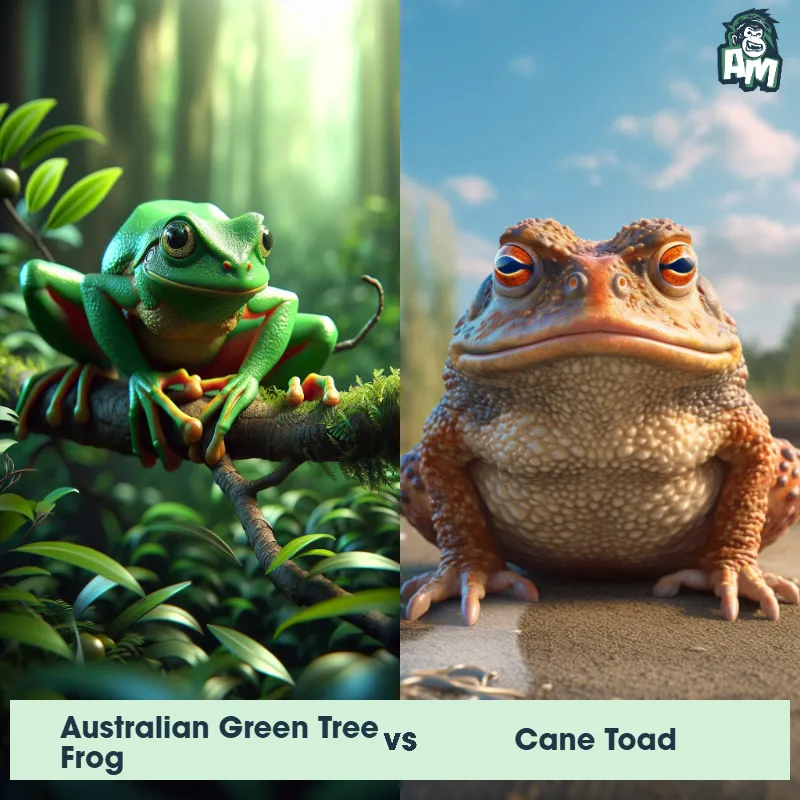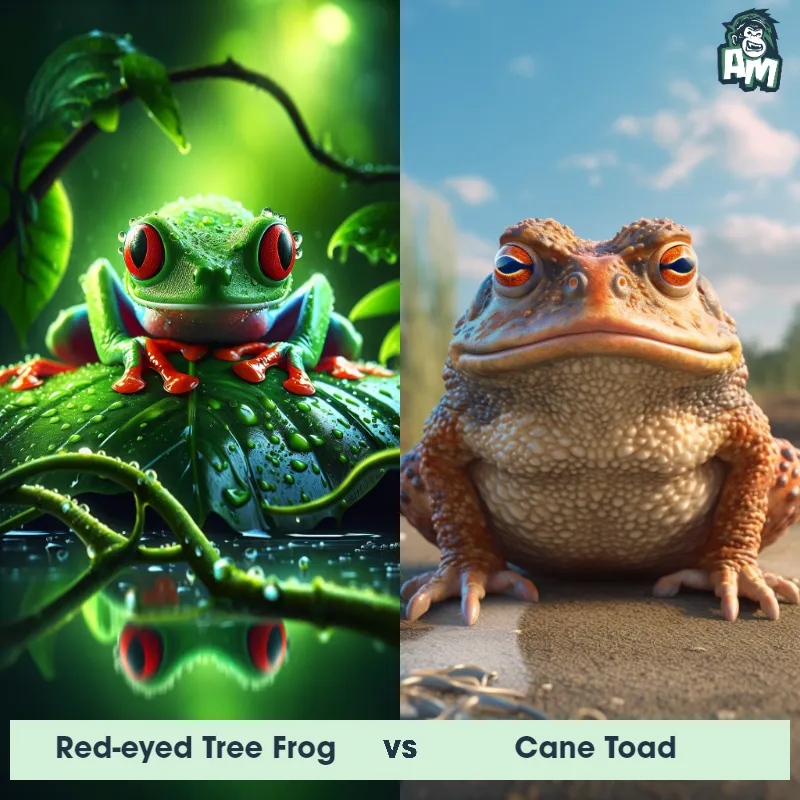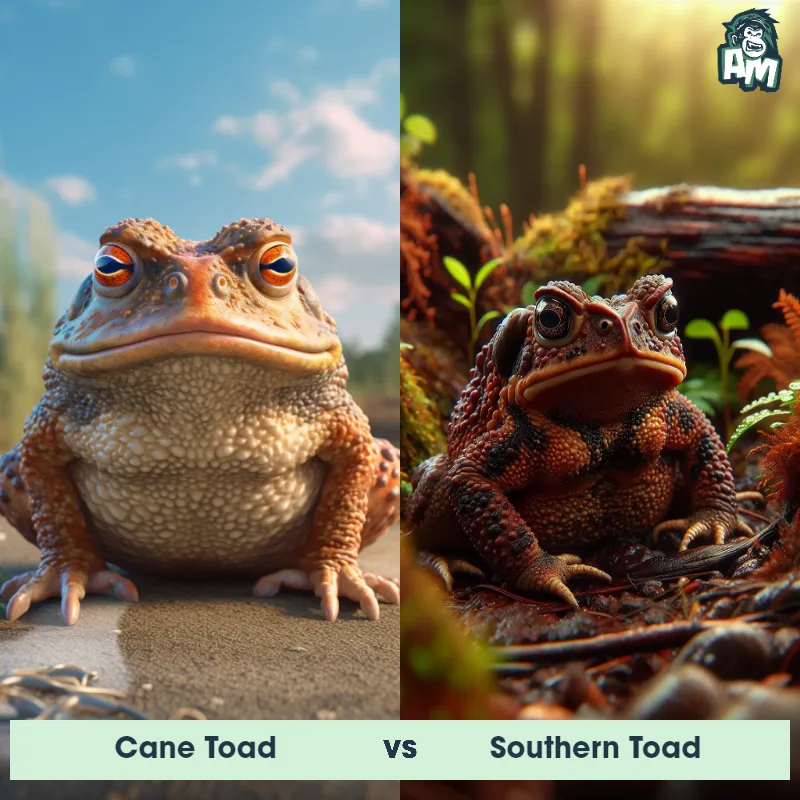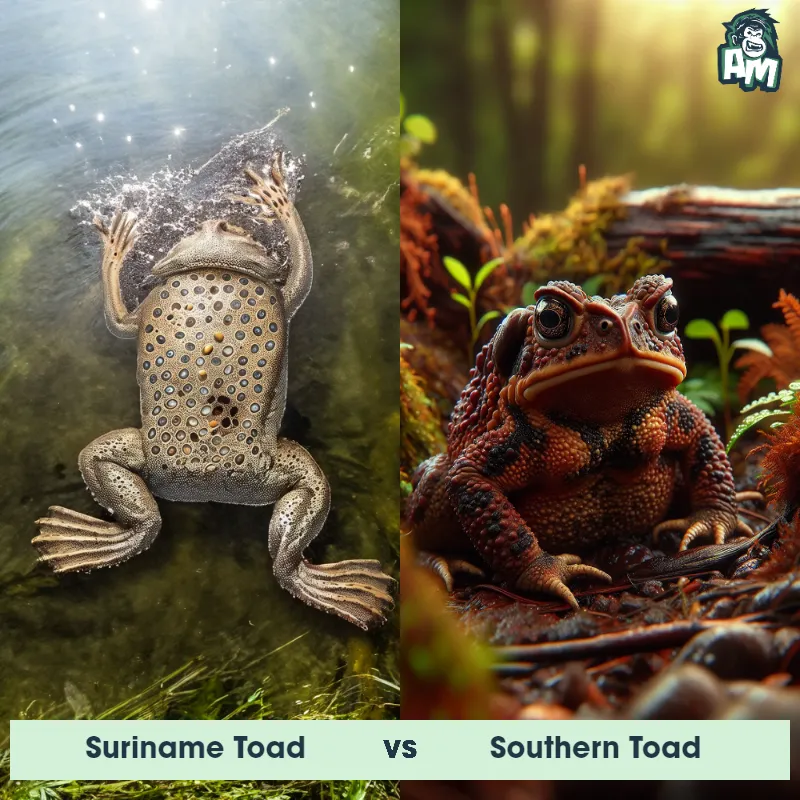Cane Toad vs Poison Dart FrogSee Who Wins
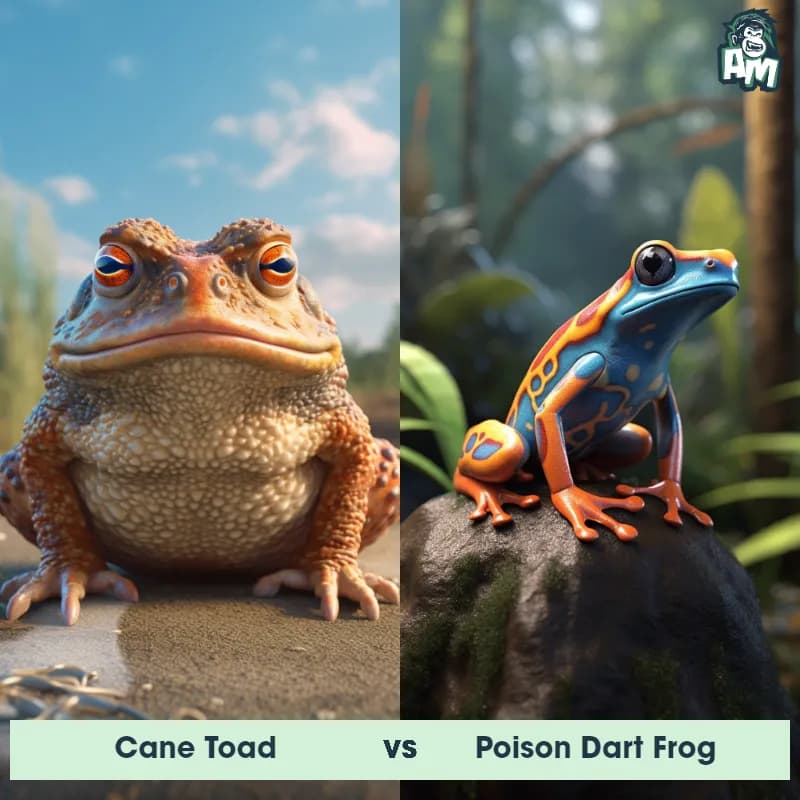
Ladies and gentlemen, we have an enthralling matchup ahead of us today between two highly toxic amphibians: the Cane Toad and the Poison Dart Frog. Both of these creatures possess unique abilities and defenses, making this a truly fascinating showdown. Let's hop into this three-round battle between these captivating competitors!
Contender 1: Cane Toad
The Cane Toad, also known as the Bufo marinus, is a large, terrestrial amphibian that can grow up to 9 inches in length. They have dry, warty skin that is typically brown or gray in color, with a creamy underbelly. Cane Toads are known for their distinctive parotoid glands located behind their eyes, which secrete a toxic substance that can be harmful to predators. They are native to Central and South America but have been introduced to other parts of the world, including Australia, where they are considered an invasive species.
Fun Fact: Cane Toads were introduced to Australia in the 1930s in an attempt to control the population of beetles that were damaging sugar cane crops, but the plan backfired as the toads had no natural predators and began to spread rapidly, causing harm to native wildlife.
Contender 2: Poison Dart Frog
The Poison Dart Frog, also known as the Poison Arrow Frog, is a small and brightly colored amphibian found in Central and South America. They are known for their toxic skin secretions, which are used as a defense mechanism against predators. These frogs come in a variety of colors, including bright red, blue, yellow, and green, and their patterns can range from spots to stripes. They are typically less than two inches in length and have a flattened body shape.
Fun Fact: The Poison Dart Frog's toxic skin secretions are so potent that some indigenous tribes in South America have used them to poison the tips of their blow darts for hunting.
Matchup Stats
| Cane Toad | Poison Dart Frog | |
|---|---|---|
| Size | Up to 9 inches (22.86 cm) | Less than 2 inches (5.1 cm) |
| Weight | Up to 4 pounds (1.81 kg) | Less than 1 ounce (28 grams) |
| Speed | Speed: 5 mph (8 km/hr) | Speed: 0.5 mph (0.8 km/hr) |
| Key Strength | Parotoid glands secrete toxic substance | Toxic skin secretions |
| Biggest Weakness | Slow movement | Small size and lack of physical strength |
Current Votes
Cane Toad vs Poison Dart Frog
See Who Wins
Match Highlights
View More Matches
Looking For More?
Similar Matches
Scientific Stats
| Cane Toad | Poison Dart Frog | |
|---|---|---|
| Scientific Name | Bufo marinus | Dendrobatidae |
| Family | Bufonidae | Dendrobatidae |
| Habitat | Terrestrial | Tropical rainforests |
| Geography | Native to Central and South America, introduced to other parts of the world | Central and South America |
| Diet | Insects, small animals, plants | Insects and other small invertebrates |
| Lifespan | 5 years - 10 years | 1 year - 15 years |
Key Differences between Cane Toad and Poison Dart Frog
- Habitat: Cane Toads are found in a variety of habitats, including urban areas, while Poison Dart Frogs are typically found in rainforests and other tropical environments.
- Coloration: Cane Toads are typically brown or gray with warty skin, while Poison Dart Frogs come in a variety of bright colors and patterns, such as blue, red, yellow, and green.
- Skin texture: Cane Toads have rough, bumpy skin, while Poison Dart Frogs have smooth, shiny skin.
- Toxicity: Cane Toads are highly toxic and can cause serious harm if ingested, while Poison Dart Frogs are also toxic but in much smaller amounts and are not typically dangerous to humans.
- Size: Cane Toads are much larger than Poison Dart Frogs, with adults reaching up to 9 inches in length, while Poison Dart Frogs are typically less than 2 inches long.
- Behavior: Cane Toads are primarily nocturnal and are known for their loud, distinctive calls, while Poison Dart Frogs are diurnal and are known for their bright colors and toxic skin.



